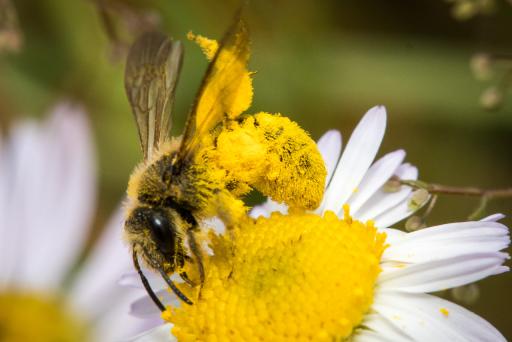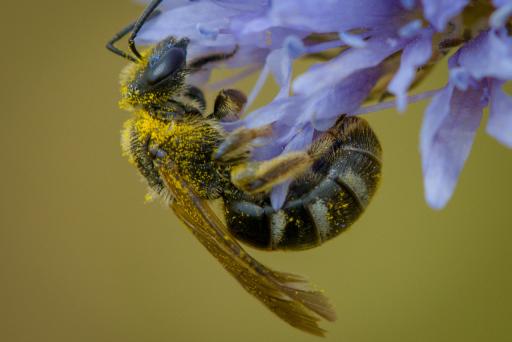Background
Interactive Guide to Bees of the Prairie Pollinator Project is the result of a labor of love which emerged from the Prairie Pollinator Project and related efforts to understand and identify pollinators in the Pacific Northwest.
We are not taxonomists, but we have learned to identify most of the taxa among our collection of 10,000 insects as a part of the Prairie Pollinator Project. How is this possible? Identification keys are the basic tools. The standard form of taxonomic key is dichotomous, or “branching”, and requires a series of characteristics of the pollinator be identified in a specific order. Each dichotomy narrows down the set of criteria for diagnosing the species. At the end of the process, you have a hypothesis: Species X! Unfortunately—if you are not a practiced specialist—these keys can be difficult to find and prohibitively complex. Your success might depend on a clear understanding of fancy terms like rugulose, and coriarius. You might need to compare your specimens to reference material in a collection that you do not have access to. Alternatives for the non-specialist have been needed.
To address this challenge, pollinator enthusiasts at IAE have worked to produce interactive (or matrix) keys. These are structured so that a user chooses character traits in any order, narrowing the list of likely matches at each step. If the user of a genus key can identify their specimen as about 5 mm and metallic green, they will have cut their list of likely targets from 23 to 4. If the next choice is more difficult, e.g. “Is the basal vein arched?”, the interactive key provides clear photos that clarify the meaning of the question for the non-specialist.
User-friendly, interactive keys are tools needed by the majority of people working to identify bees in the field and in their own backyard. These include land managers, ecologists, and wildlife enthusiasts across the Pacific Northwest.
We have developed interactive keys that allow us to track identifications for our own specimens, collected in Willamette Valley and western Washington. We offer them here, noting the following limitations:
- These keys are far from comprehensive. We only attempt to describe species within our own collection, which are associated with prairie habitats in the Willamette Valley and Cascadian area of Washington. Males are poorly represented in these keys.
- They are intended to begin assessing the diversity represented in a collection. They are not substitutes for a more detailed (and more difficult) scientific analysis. A definitive answer requires genuine expertise in most cases. Any identifications made with these keys should be considered a hypothesis, pending further expert advice.
- They include taxa referred to as morphospecies—cases where we don’t know the species identification, but we know that it is distinct from other species in the key.
- They are always in draft form. We regularly revise our categories, correct errors, and welcome feedback. Send us your ideas for how we can improve our pollinator guides! Contact David Cappaert at [email protected] for more information.

